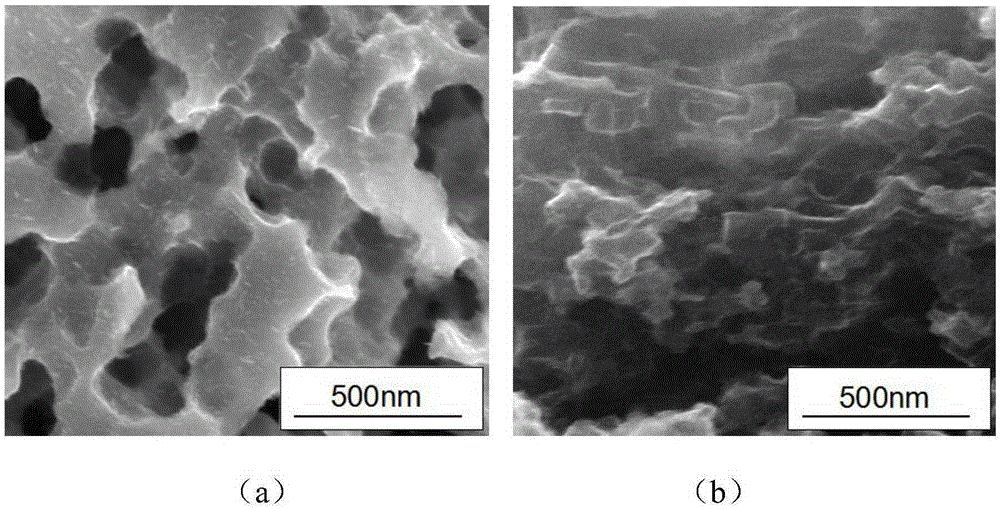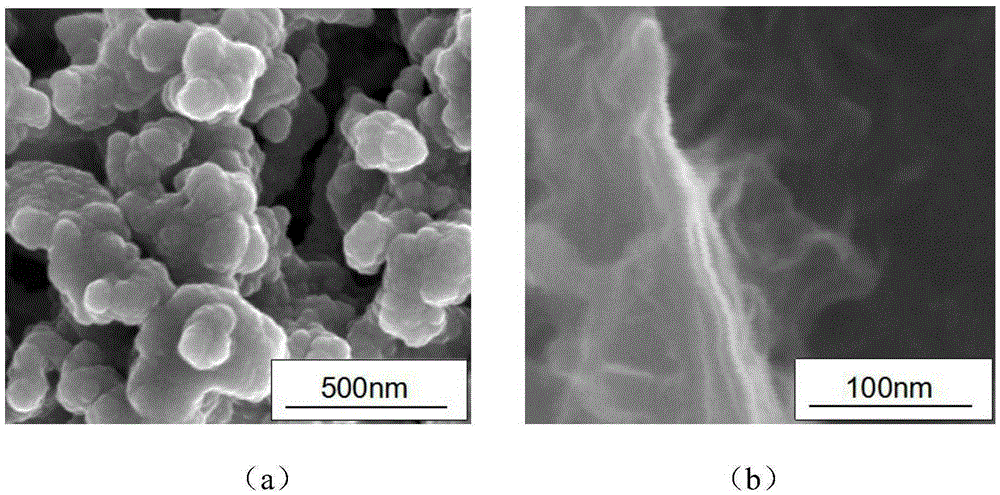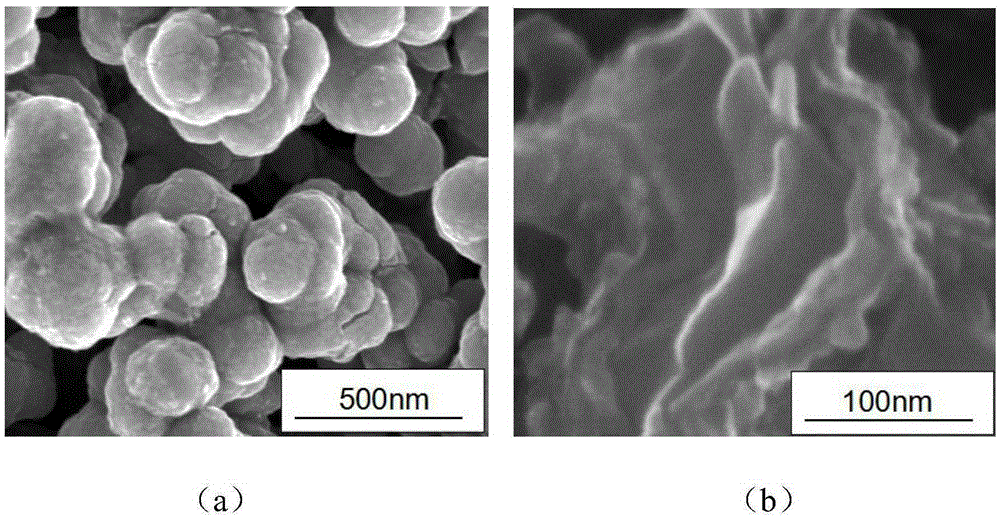Method for preparing high-dielectric composite film in combination with ALD (Atomic Layer Deposition)
A composite film, high dielectric technology, applied in the manufacture of capacitor electrodes, capacitor parts, electrolytic capacitors, etc., can solve the problems of small effective coating area, easy film shrinkage, and coating thickness, etc., to achieve increased coating area and tight fit Effect
- Summary
- Abstract
- Description
- Claims
- Application Information
AI Technical Summary
Problems solved by technology
Method used
Image
Examples
Embodiment 1
[0027] Put a low-pressure etched aluminum foil in an atomic layer deposition chamber with a vacuum degree of 5hPa at 25°C, use nitrogen (99.99%) as the carrier gas, blow into the niobium source in the form of steam for 0.2S, and then blow in nitrogen for cleaning for 5S; Nitrogen was used as the carrier gas, and H was blown into the vapor form2 o 2 0.2S, and then pass nitrogen gas for cleaning for 5S; react for 500 cycles, and coat a layer of niobium oxide film. Then put the aluminum foil into a 5wt% ammonium pentaborate solution at 90°C, at 50V, 300mA / cm 2 formed under conditions. During the formation process, when the voltage reaches 50V, keep the voltage value unchanged, and reduce the current density to 0.3mA / cm 2 , and finally heat-treat the aluminum foil in an air atmosphere at 400°C for 10 minutes, and perform supplementary formation under the same conditions as the chemical formation process, until the current density drops to 0.2mA / cm 2 .
Embodiment 2
[0029] Put a low-pressure etched aluminum foil in an atomic layer deposition chamber with a vacuum degree of 15hPa at 80°C, use nitrogen (99.99%) as a carrier gas, blow into the hafnium source in the form of steam for 1.5S, and then blow in nitrogen for cleaning for 20S; Nitrogen was used as the carrier gas, and H was blown into the vapor form 2 O1.5S, and then pass nitrogen gas to clean for 20S; react for 400 cycles, and coat a layer of hafnium oxide film. Then put the aluminum foil into the 1.4wt‰ ammonium dihydrogen phosphate solution at 80°C, at 100V, 200mA / cm 2 formed under conditions. During the formation process, when the voltage reaches 100V, keep the voltage value unchanged and reduce the current density to 0.5mA / cm 2 , and finally heat-treat the aluminum foil in an air atmosphere at 450°C for 8 minutes, and perform supplementary formation under the same conditions as the chemical formation process, until the current density drops to 0.3mA / cm 2 .
Embodiment 3
[0031] Put a low-pressure etched aluminum foil in an atomic layer deposition chamber with a vacuum of 10hPa at 100°C, use nitrogen (99.99%) as the carrier gas, blow into the titanium source in the form of steam for 1S, and then blow in nitrogen for cleaning for 15S; As a carrier gas, H was blown in vapor form 2 O1S, and then pass nitrogen gas to clean for 15S; react for 300 cycles, and coat a layer of titanium oxide film. Then put the aluminum foil into 5wt% ammonium pentaborate solution at 70°C, at 150V, 100mA / cm 2 formed under conditions. During the formation process, when the voltage reaches 150V, keep the voltage value unchanged, and reduce the current density to 1mA / cm 2 , and finally heat-treat the aluminum foil in an air atmosphere at 500°C for 5 minutes, and perform supplementary formation under the same conditions as the chemical formation process, until the current density drops to 0.2mA / cm 2 .
PUM
| Property | Measurement | Unit |
|---|---|---|
| Thickness | aaaaa | aaaaa |
Abstract
Description
Claims
Application Information
 Login to View More
Login to View More - R&D
- Intellectual Property
- Life Sciences
- Materials
- Tech Scout
- Unparalleled Data Quality
- Higher Quality Content
- 60% Fewer Hallucinations
Browse by: Latest US Patents, China's latest patents, Technical Efficacy Thesaurus, Application Domain, Technology Topic, Popular Technical Reports.
© 2025 PatSnap. All rights reserved.Legal|Privacy policy|Modern Slavery Act Transparency Statement|Sitemap|About US| Contact US: help@patsnap.com



